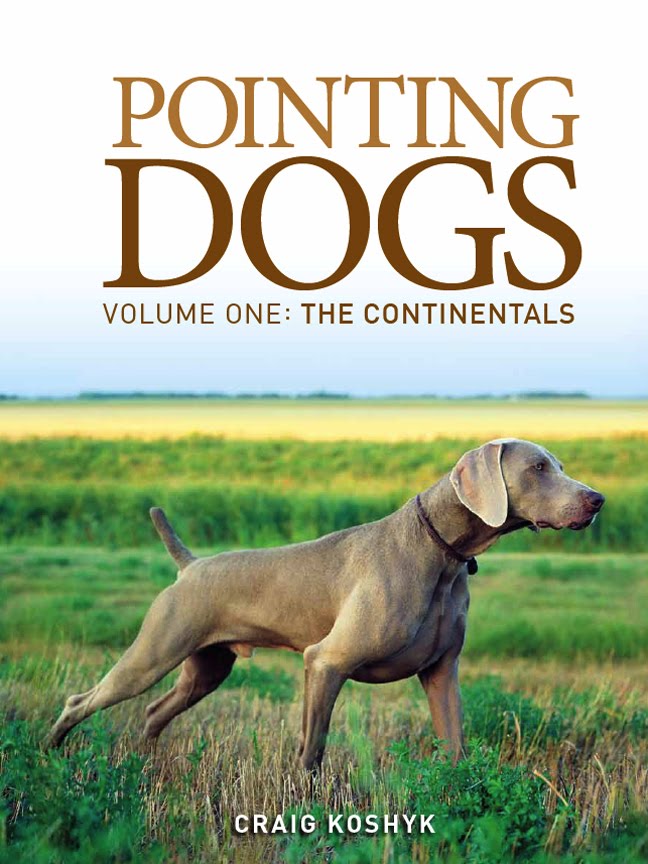Kent Bismuth Ammo Delivers!
 |
| Bismuth ammo and Darne shotguns, a match made in heaven! |
 |
| Lisa and her Pont-Audemer Spaniel "Uma" with three Manitoba woodcock taken with 20 gauge Kent Bismuth #6s |
A while ago I wrote about my desire to go completely lead free for all my hunting and my journey down the rabbit hole of trying to find lead-free, non-steel ammo for my beloved Darne shotguns. I updated one of the posts with the following great news:
Owners of vintage guns rejoice! ... Kent Cartridge recently announced "the rebirth of an old favorite" by introducing their new Bismuth Premium Shotshells.
Just before the season opened, I managed to get my hands on a good supply of the new Kent ammo in 12 and 20 gauge loads. Since then, my wife and I have been using it exclusively. We've taken snipe, woodcock, ruffed grouse, sharptailed grouse and a few ducks and geese. My wife even shot a scotch double* ON GEESE with her 20 gauge loaded with #5s! I wrote about that amazing shot and posted some photos here. (*two birds with one shot)
 In terms of performance, I could not tell the difference between Bismuth loads and lead loads. Now before you get your bloomers in a bunch and start rattling off newtonian physics equations let me qualify my statement by saying it applies to me, to my guns, in the areas I hunt, on the game I pursue. As with all things related to shotguns and shotgun ammo, your mileage, as they say, may vary.
In terms of performance, I could not tell the difference between Bismuth loads and lead loads. Now before you get your bloomers in a bunch and start rattling off newtonian physics equations let me qualify my statement by saying it applies to me, to my guns, in the areas I hunt, on the game I pursue. As with all things related to shotguns and shotgun ammo, your mileage, as they say, may vary.My hit/miss/crumple/wound ratio was nearly identical this year compared to last. For example, on a trip to North Dakota in 2015, I shot 14 pheasants with 16 shots (lead #5s). All but two dropped stone dead. This year, in the same general area under the same basic conditions and with the same gun I shot 15 roosters with 17 shots (bismuth). All but one crumpled, and that one did not go far.
(note: the above stats make me seem like some kind of superhero wing shooter. I am not. I am a terrible trap shooter, useless at skeet and barely on the scoreboard at 5-stand. The reason I bag a decent number of roosters with so few shots is because I am a very patient pheasant hunter with decent dogs. I pass up all birds that are not pointed, all birds beyond about 35 yards and only pull the trigger on birds I am pretty confident I will kill outright.)
 |
| Léo with his first ever Mallard. Bird was taken with 20 gauge Kent Bismuth #5s |
As a practical matter, assume that you want a minimum of 1.75 inches of ballistic gelatin penetration for pheasant. This cannot be exact, for gel penetration does not consider feathers, much less breaking bones. It is a comparative simulant for soft tissue only.
If you are using #2 steel shot at 1400 fps, you are out of gas at 35 yards. With the lower recoil 1350 fps Kent Bismuth #4 load, you are good past 41 yards. #4 bismuth has better penetration at all ranges than #2 steel.
In addition, a 1-1/4 ounce load of #4 bismuth has 24.5% more pellets than 1-1/4 ounces of #2 steel. If you are sick of the poor ballistic performance of steel (why wouldn't you be?) and can afford to pay twice the price for your shotgun shells, the new Kent Bismuth loads just made steel shot obsolete. (full article here)
 |
| Lisa and Léo with Léo's first Teal taken with 20 gauge Kent Bismuth #6s |
The shot sizes are true American sizing and not one size smaller like some other loads from Europe. Kent Bismuth #4s are the same size as any other American #4s. The other maker of bismuth ammo, Rio, apparently uses European shot sizes. So Rio's #4 shot is actually closer to American (and Kent's) #5 shot. Kent shells are clearly marked and seem to be made of high quality materials. Word on the web is that the hulls are Cheddites.
 |
| Léo with his first ever Canada goose. This bird (nearly 15 lbs!!) was taken with one shot of 12 gauge Kent Bismuth #5s |
Bottom line: I will go one further than Randy Wakeman and say that for me, the new Kent Bismuth loads have made steel AND LEAD shot obsolete. Furthermore, shooting bismuth shells allows me to focus more on the actual hunt. With a few boxes of #5s and #6s, I can use any gun I own to shoot any gamebird I pursue on private or public land no matter what the regulations are. No more swapping out ammo when going from lead-allowed to non-tox areas, no more sorting through different brands, sizes, and loads trying to get the perfect combination for geese in the morning, snipe in the afternoon and ducks at dusk. I am now lead-free in the field and thanks to Kent, when it comes to ammo, I am also worry-free.
Enjoy my blog posts? Check out my book Pointing Dogs, Volume One: The Continentals













0 comments: